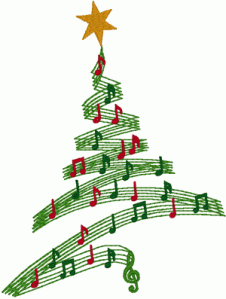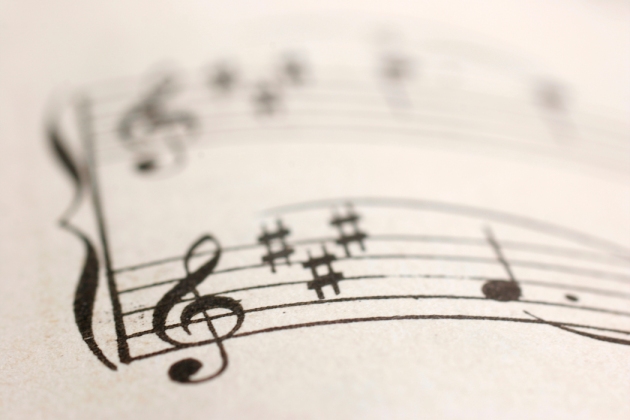If you teach beginning band like I do, you know that preparing for the Winter Concert is a huge challenge. Here are a few ideas to make that first performance a little better.
 1. Use piano accompaniment. Let’s face it: A unison rendition of Hot Cross Buns and Jingle Bells is pretty frightening. Having a piano accompanist who can fill out the harmonies will go a long way in adding color. Ever since I started using a pianist about 10 years ago, I can’t imagine doing it any other way. Hint: Decide on your metronome markings in advance and tell your accompanist. Also, bring in the accompanist at least once before the performance to get the students used to the idea.
1. Use piano accompaniment. Let’s face it: A unison rendition of Hot Cross Buns and Jingle Bells is pretty frightening. Having a piano accompanist who can fill out the harmonies will go a long way in adding color. Ever since I started using a pianist about 10 years ago, I can’t imagine doing it any other way. Hint: Decide on your metronome markings in advance and tell your accompanist. Also, bring in the accompanist at least once before the performance to get the students used to the idea.
2. Feature various instrument groups at the beginning of each song. For example, the clarinets might play Mary Had a Little Lamb alone (with piano) first, and then the rest of the ensemble joins them on the repeat. Hint: Feature your strongest section on your most difficult piece, and a weaker section on an easier piece. For me, that usually means the trombones get featured on Hot Cross Buns, and the clarinets get featured on Jingle Bells.
3. Allow a student to introduce the songs to the audience. You’ll want to select a student with a good speaking voice, not necessarily your best musician. Rehearse their speech with them. (By speech, I mean “Our first song is Hot Cross Buns. It will feature the trumpets.”)
4. Give parents a moment to take pictures while the students are on stage with their instruments. I didn’t start doing this until I had children of my own, and my wife took a gazillion photos of every move they made. Now I appreciate the fact that parents want to capture the moment.
5. Make sure there is at least one administrator and another teacher at the performance. If your concert features more than one ensemble, you need someone to supervise the students who aren’t performing. And if a more serious incident occurs during the performance – like an injury, a squabble among parents, a power outage, etc. – you’ll need an administrator to manage that issue while you lead your performers.
Any other bright ideas? Share them here!


 This Spring, I have purposefully programmed music that is easier than what I’ve chosen in the past. I’ve decided to err on the side of giving the students music which is more easily within their grasp instead of overwhelming them with difficult music. I still want to challenge them with new musical concepts, but not necessarily in the context of concert selections.
This Spring, I have purposefully programmed music that is easier than what I’ve chosen in the past. I’ve decided to err on the side of giving the students music which is more easily within their grasp instead of overwhelming them with difficult music. I still want to challenge them with new musical concepts, but not necessarily in the context of concert selections. For the first time, my advanced groups played at our local zoo’s Holiday Lights event. (Click
For the first time, my advanced groups played at our local zoo’s Holiday Lights event. (Click  “Winter Concert Cancelled Due to Intense Fog.” Does this sound like the headline from a bad Christmas movie or what? Well, that’s what happened for one of my schools this year. Here in Bakersfield, we regularly have 2-hour fog delays during the Winter months, and the concert happened to fall on one of those days.
“Winter Concert Cancelled Due to Intense Fog.” Does this sound like the headline from a bad Christmas movie or what? Well, that’s what happened for one of my schools this year. Here in Bakersfield, we regularly have 2-hour fog delays during the Winter months, and the concert happened to fall on one of those days.
